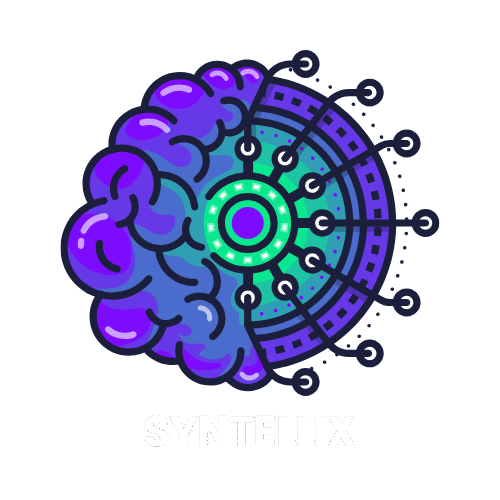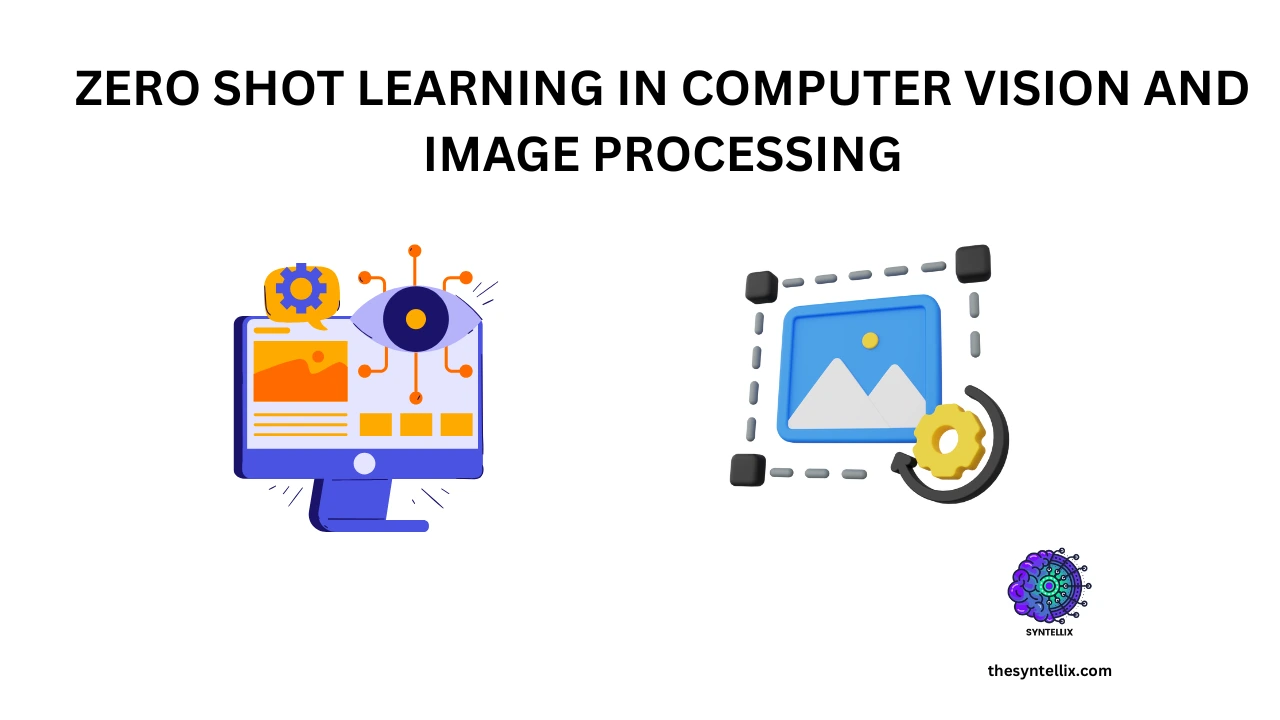Zero-Shot Learning Computer Vision has emerged as a groundbreaking paradigm in Artificial Intelligence, directly addressing the monumental “data dilemma” faced by traditional machine learning. While its principles apply broadly, ZSL finds some of its most compelling and visually intuitive applications within the domains of Computer Vision and Image Processing.
Here, the ability to recognize, understand, and even enhance images or visual data without prior direct examples opens up a vast array of possibilities, from classifying never-before-seen objects to recovering fine details in low-resolution imagery.
Zero-Shot Learning for Image Classification: Seeing the Unseen
Basically, Zero-Shot Learning for Image Classification is about empowering an Artificial Intelligence model to correctly categorize or “recognize” an object in an image, even if that specific object category (e.g., “platypus,” “zebra,” “drone”) was never present in its training dataset.
The Traditional Classification Problem
Imagine a standard image classification system. You train it on millions of images of dogs, cats, cars, and airplanes. When you show it a new picture, it can accurately tell you if it’s a dog, a cat, a car, or an airplane.
However, if you show it a picture of a “giraffe,” and “giraffe” was not one of its training categories, the model will simply classify it as one of the known categories (e.g., a “dog” because it’s a four-legged animal, or simply “unknown”) – it cannot truly recognize the giraffe. This is because traditional models learn a direct mapping from image pixels to specific class labels.
The Zero-Shot Solution: Bridging Pixels to Meaning
ZSL for image classification overcomes this by introducing an intermediate layer of semantic understanding. Instead of directly mapping pixels to labels, the model learns to map visual features to a conceptual space of meaning.
The core idea relies on three key components:
- Visual Feature Extractor:
- This is typically a powerful Convolutional Neural Network (CNN) (e.g., ResNet, VGG, EfficientNet) that has been pre-trained on a massive, general-purpose image dataset (like ImageNet).
- Its job is to take an input image (pixels) and transform it into a compact, high-dimensional numerical representation (a “feature vector”) that captures the essential visual characteristics of the image (e.g., shapes, textures, colors, object parts). This process removes irrelevant noise and highlights discriminative visual information.
- Semantic Descriptions (Side Information):
- This is the “meaning” component. For every class – both the ones the model has seen during training (seen classes) and the ones it has never seen (unseen classes) – we provide a rich, machine-understandable description of what that class represents.
- Common forms include:
- Attribute Vectors: A hand-defined list of characteristics (e.g., for “zebra”:
[has_stripes=1, has_mane=1, is_equine=1, can_fly=0]). - Word Embeddings / Text Embeddings: A dense numerical vector (e.g., from Word2Vec, GloVe, BERT, or CLIP’s text encoder) that captures the semantic meaning of the class name or a descriptive phrase about the class. This is the most common and powerful method today, especially with multimodal models.
- Attribute Vectors: A hand-defined list of characteristics (e.g., for “zebra”:
- Mapping Function (The Translator):
- This is usually another neural network that acts as the “bridge.”
- Its purpose is to learn a transformation from the visual feature space to the semantic space. In other words, it learns to predict what an object’s semantic description should be based on its visual features.
How It Works (Step-by-Step)
Let’s illustrate with an example where our model has seen images of horses and tigers, but never seen images of zebras:
- Training Phase (on Seen Classes):
- The model receives pairs of (Image, Class Label). For a “horse” image, it also has access to the “horse” semantic description.
- The Visual Feature Extractor processes the “horse” image to get its visual features.
- The Mapping Function takes these visual features and learns to project them into the Semantic Space such that they land very close to the semantic description of “horse.”
- It does this for all seen classes (horses, tigers, cats, etc.), effectively learning a generalized relationship: “If an image has these visual features, its semantic meaning is like this.”
- Inference Phase (on an Unseen Class – e.g., Zebra):
- You present the trained model with a new image – say, a “zebra.”
- The Visual Feature Extractor processes the “zebra” image, extracting its visual features.
- The Mapping Function (which was trained on seen classes) takes these newly extracted “zebra” visual features and projects them into the same semantic space.
- Now, in the semantic space, the model has:
- The projected point representing the visual features of the zebra image.
- The semantic descriptions for all possible classes (horse, tiger, and zebra).
- The model then calculates the similarity (e.g., cosine similarity) between the projected zebra visual features and all the available semantic descriptions.
- Even though it never saw a zebra image before, it finds that the projected zebra features are numerically closest to the semantic description of “zebra” (e.g., because of the distinct “striped” attribute).
- Prediction: The model correctly classifies the image as a “zebra.”
Key Benefits of ZSL for Image Classification:
- Data Efficiency: Drastically reduces the need for enormous, exhaustively labeled datasets for every conceivable class.
- Rapid Adaptability: Allows AI systems to understand and categorize new objects or concepts as soon as their semantic descriptions become available, without requiring new data collection and retraining.
- Enhanced Generalization: Enables AI to learn more human-like reasoning, where knowledge about existing concepts can be creatively applied to new ones.
Challenges:
While powerful, ZSL for image classification faces challenges like the “semantic gap” (ensuring the visual and semantic spaces are truly aligned) and the bias towards seen classes in “generalized zero-shot learning” settings (where both seen and unseen classes might appear at test time).
However, ongoing research, particularly with large-scale vision-language models, continues to push its capabilities further.
In essence, Zero-Shot Learning for image classification is a leap towards more intelligent, flexible, and resource-efficient visual AI systems, capable of navigating a world full of novelties..
Beyond Classification: Zero-Shot Learning Computer Vision Applications
The power of ZSL extends far beyond simple classification, impacting various aspects of computer vision and image processing:
1. Zero-Shot Super-Resolution Using Deep Internal Learning
Super-resolution (SR) is the task of enhancing the resolution of an image, turning a blurry, pixelated input into a crisp, high-definition output. Traditionally, SR models require extensive training on paired low-resolution (LR) and high-resolution (HR) images, learning how to reconstruct details from vast datasets of examples.
Zero-Shot Super-Resolution (ZSSR) using Deep Internal Learning revolutionizes this by allowing a deep learning model to perform super-resolution on a single image at test time, without relying on any external training dataset of LR-HR pairs.
The core idea is that natural images exhibit self-similarity across different scales. This means that patches within a low-resolution image, when downscaled further, resemble the patches found at lower resolutions of the original image.
A ZSSR model trains a small convolutional neural network (CNN) on the input image itself. It generates synthetic LR-HR pairs by downscaling the given LR image at various factors and then training the network to predict the details needed to reconstruct higher resolutions.
This “internal learning” allows the model to adapt specifically to the unique internal degradation patterns and textures of the single input image, leading to remarkably sharp results without prior generic training data.
This is particularly useful for real-world images where the degradation process (blur, noise) might be unknown or complex.
2. Learning Generalized Zero-Shot Learners for Open-Domain Image Geolocalization
Image geolocalization is the challenging task of predicting the precise geographical coordinates where a photo was taken, based solely on its visual content. This typically requires massive datasets of geo-tagged images.
Generalized Zero-Shot Learners for Open-Domain Image Geolocalization aim to predict locations across a vast, unstructured range of possible geographies (open-domain) even for regions the model has never explicitly seen during training.
This is achieved by leveraging multimodal models (like CLIP), which are pre-trained on vast amounts of image-text pairs to learn a rich understanding of visual concepts and their semantic descriptions.
The ZSL approach here often involves formulating geolocalization as a semantic matching problem.
For instance, given an image, the model can generate or compare potential textual descriptions of locations (e.g., “a street in Paris,” “a desert in Nevada”) and find the best match based on its learned image-text alignment.
This allows the model to infer locations even for areas for which it has no direct geo-tagged training images, by drawing on its general world knowledge embedded in the joint visual-semantic space.
3. Attentive Region Embedding Network for Zero-Shot Learning
Many traditional ZSL methods focus on global image features, which can sometimes miss fine-grained visual cues critical for distinguishing between similar-looking unseen classes.
The Attentive Region Embedding Network (AREN) for Zero-Shot Learning addresses this by incorporating an attention mechanism to automatically identify and focus on the most discriminative local regions (or “parts”) within an image.
These regions often correspond to semantic attributes (e.g., a bird’s beak, an animal’s stripes) and provide richer, more localized information than global features. AREN learns to embed these attentive regions into the semantic space, enhancing the transfer of knowledge from seen to unseen classes.
By precisely attending to and embedding relevant parts of an object, AREN improves the model’s ability to differentiate between novel categories even with subtle visual differences.
4. Context-Aware Zero-Shot Learning for Object Recognition
Traditional object recognition often processes objects in isolation. However, in real-world scenes, objects interact and appear within specific contexts that can provide crucial clues about their identity.
Context-Aware Zero-Shot Learning for Object Recognition aims to leverage these inter-object relationships and the surrounding visual context to better identify unseen objects.
For example, if an AI sees a person and a dog playing, and there’s a red, disk-like object in their vicinity, even if “frisbee” is an unseen class, the context (person-dog-play) provides strong semantic cues that help infer the object’s identity.
These methods often integrate a graph-based reasoning module or a Conditional Random Field (CRF) with ZSL frameworks to model the relationships between all objects in a scene, both seen and unseen, and use this relational context to improve recognition of novel objects.
5. Deep Tree Learning for Zero-Shot Face Anti-Spoofing
Face Anti-Spoofing (FAS) is a crucial security measure that distinguishes real human faces from various spoofing attacks (e.g., printed photos, video replays, 3D masks). New types of spoofing attacks emerge constantly, making it impossible to train a model on every conceivable attack type.
Deep Tree Learning for Zero-Shot Face Anti-Spoofing (ZSFA) tackles this challenge by recognizing unknown spoof attacks. Unlike general object recognition where semantic attributes might be clear, spoof patterns lack explicit semantic embeddings.
A Deep Tree Network (DTN) is proposed to learn a hierarchical, unsupervised partitioning of spoof samples into semantic sub-groups. When a new, unknown spoof attack is encountered, the DTN routes it through the learned tree structure to the most similar spoof cluster, allowing for a binary decision (real vs. spoof) even without direct prior examples of that specific attack type.
This approach helps generalize anti-spoofing capabilities to novel threats, enhancing the security of face recognition systems.
The Future of Zero-Shot Learning Computer Vision
The integration of Zero-Shot Learning with Computer Vision and Image Processing is transforming how AI interacts with the visual world.
From enabling higher quality images without extensive training data to identifying novel objects, locations, and even security threats, ZSL’s ability to generalize to unseen scenarios is pushing the boundaries of what’s possible.
As research in multimodal learning and semantic understanding continues to advance, we can expect ZSL to play an increasingly critical role in making vision AI more robust, adaptable, and truly intelligent in open-world environments.
Explore further into the fascinating world of Zero-Shot Learning by reading our main pillar post: Link to Pillar Post: What is Zero-Shot Learning (ZSL) in AI.
Stay ahead of the curve with the latest insights, tips, and trends in AI, technology, and innovation.

